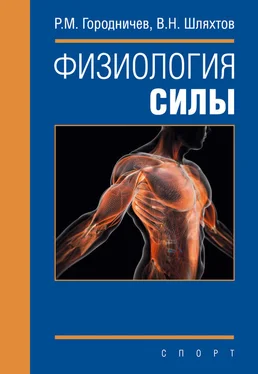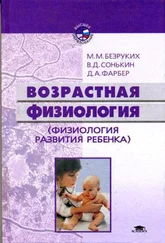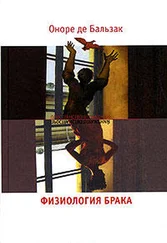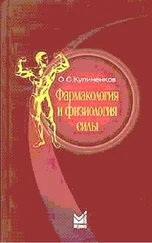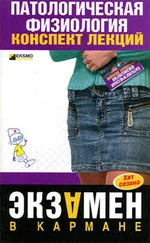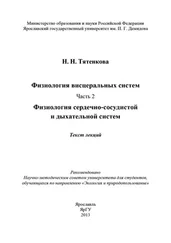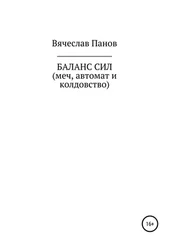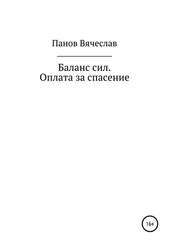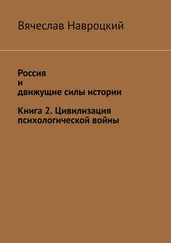178. Fellmann N., J. Coudert, J. F. Jarrige, M. Bedu, C. Denis, D. Boucher, and J. R. Lacour. 1985. Effects of endurance training on the androgenic response to exercise in man. International Journal of Sports Medicine; 6: 215–219.
179. FeltnerM. E., H. S. MacRae, P. G. MacRae, N. S. Turner, С. А. Hartman, M. L. Summers and M. D. Welch. 1994. Strength training effects on rearfoot motion in running. Med Sci Sports Exerc.; 26: 1021–1027.
180. Fisher H. The Relationship between Force Production during Isometric Squats and Knee Flexion Angles during Landing // Stephenson, Mitchell L.; Graves, Kyle K.; Hinshaw, Taylour J.; Smith, Derek T.; Zhu, Qin; Wilson, Margaret A.; Dai, Boyi/ Journal of Strength & Conditioning Research: Post Acceptance: November 11, 2015.
181. Foss M. L. Physiological basic for exercise and sport (sixth edition) / M. L. Foss, S. J. Keteyian. – Singapore, 2008. – 620 p.
182. Franchini E. Influence of linear and undulating strength periodization on physical fitness, physiological and performance responses to simulated judo matches. Franchini E., Branco B., Agostinho M., Calmet M., Candau R. J Strength Cond Res. 2015 Feb; 29 (2): 358-67.
183. Frey R., B. M. DoerrL. S. Srivastava et al. 1983. Exercise training, sex hormones and lipoproteins in man. Journal of Applied Physiology; 34: 757–762.
184. Friden J., J. Seger, M. Sjostrom and B. Ekblom. 1983. Adaptive response in human skeletal muscle subjected to prolonged eccentric training. In J Sports Med. 4: 177–183.
185. Fry A. C., and W. J. Kraemer 1997. Resistance exercise overtraining and overreaching: Neuroendocrine responses. Sports Medicine; 23: 106–129.
186. Fry A. C., W. J. Kraemer, M. H. Stone et al. 1994. Endocrine and performance responses to overreaching before and after 1 year of weightlifting. Canadian Journal of Applied Physiology; 19 (4): 400410.
187. Galbo H., L. Hamner, I. B. Petersen, N. J. Christensen and W. Bie. 1977. Responses to graded and prolonged exercise in man. European Journal of Applied Physiology; 36: 101–106.
188. Gerasimenko Y., Gorodnichev R., Machueva E. et al. Novel and direct access to the human locomotor spinal circuitry //J. Neuroscience. 2010. 30 (10). P. 3700–3708.
189. Gollnick P. D. and B. Saltin. 1982. Significance of skeletal muscle oxidative enzyme enhancement with endurance training. Clinical Physiology; 2: 1-12.
190. Gregory L. W. 1981. Some observations on strength training and assessment. J. Sports Med.; 21: 130–137.
191. Guilhem G. Neuromuscular and muscle-tendon system adaptations to isotonic and isokinetic eccentric exercise// G. Guilhem, C. Cornu, A. Guevel/ Annals of Physical and Rehabilitation Medicine Vol. 53, Issue 5. – 2010, P. 319–341
192. Hagberg M. 1981. Muscular endurance and surface dectro-myogram in isometric and dynamic exercise. J. Appl Physiol; Respirat Environ Exerc Physiol.; 51 (l): l-7.
193. Hakkinen K. (2003). Aging and neuromuscular adaptation to strength training. In P. V. Komi (Ed.), Strength and power in sport (pp. 409-25). Oxford: Blackwell Publishing,
194. Hakkinen K., A. Pakarinen, M. Alen et al. 1985. Serum hormones during prolonged training of neuromuscular performance. European Journal of Applied Physiology; 53: 287–293.
195. Hakkinen K., A. Pakarinen, M. Alen et al. 1987. Relationship between training volume, physical performance capacity and serum hormone concentrations during prolonged training in elite weightiifters. International Journal of Sports Medicine (Suppl. 8): 61–65.
196. Hakkinen K., A. Pakarinen, M. Alen et al. 1988b. Neuromuscular and hormonal adaptations in athletes to strength training in two years. Journal of Applied Physiology; 65: 2406–2412.
197. Hakkinen K. and A. Pakarinen. 1993. Muscle strength and serum testosterone, cortisol and SHBG concentrations in middle-aged and elderly men and women. Acta Physiologica Scandinavica; 148: 199–207.
198. Hakkinen K., K. L. Keskinen, M. Alenetal. 1989. Serum hormone concentrations during prolonged training in elite endurance trained and strength trained athletes. European Journal of Applied Physiology; 59: 233–238.
199. Harthеr R. A., L. R. Mernig, and L. W. Standifer 1990. Isokinetic evaluation of quadriceps and hamstrings symmetry following anterior cruciate ligament reconstruction. Arch Phys Med Rehab.; 71: 456–468.
200. Hettinger Т. and E. Muller. 1953. Muskelleistung und Muskel-training. Arbeitsphysiol.; 15: 111–126.
201. Hoffman J. R. 1997. The relationship between aerobic fitness and recovery from high-intensity exercise in infantry soldiers. Military Medicine; 162: 484–488.
202. Huerta P. T. Transcranial magnetic stimulation, synaptic plasticity and network oscillatios / P. T. Huerta, B. T. Volpe // J. of Neuro Engineering and Rehabilitation. – 2009. – № 6. – P. 1186–1274.
203. Huxley A. F. Muscular contraction. J Physiol. 1974 Nov; 243 (1): 1-43.
204. Inghillery M. Corticospinal potentials after transcranial stimulation in humans / M. Inghillery, A. Berrardelli, G. Cruccu, A. Priori, M. Manfrdi // Journal of Neurology, Neurosurgery and Psychiatry. -1989. 52, 970–974.
205. Issurin V. A modern approach to high-performance training: the Block Composition concept / V. Issurin // Blumenstein, B. Psychology of sport training / B. Blumenstein, R. Lidor and G. Tenenbaum (eds.). – Oxford: Meyer & Meyer Sport, 2007. – P. 216–234.
206. Jensen J. H., H. Oftebro, B. Breigan et al. 1991. Comparison of changes in testosterone concentrations after strength and endurance exercise in well trained men. European Journal of Applied Physiology; 63: 467–471.
207. Jezova D., M. Vigas, P. Tatar et al. 1985. Plasma testosterone and catecholamine response to physical exercise in man. European Journal of Applied Physiology; 54: 62–66.
208. Johansson С, R. Lorentzon and A. R. Fugl-Meyer. 1989. Isokinetic muscular performance of the quadriceps in elite ice hockey players, J Sports Med.; 17: 30–34.
209. Jones, Thomas W. Performance and neuromuscular adaptations following different ratios of concurrent strength and endurance training // G. Howatson, M. Russell, N. French, Duncan / Journal of Strength and Conditioning Research, 27 (12). – 2013. Pp. 3342–3351.
210. Jonson В. L., W. Adamczyk, K. O. Tennoe and S. B. Stromme. 1976. A comparison of concentric and eccentric muscle training. Med Sci Sports; 8 (l): 35–38.
211. Kimura J. Electrodiagnosis in diseases of nerve and muscle: principles and practices, 2th ed. – Philadelphia: F. A. Davis Company. – 1989. – 709 c.
212. Kindermann W., A. Schnabel, W. M. Schmittetal. 1982. Catecholamines, growth hormone, cortisol, insulin and sex hormones in aerobic and anaerobic exercise. European Journal of Applied Physiology; 49: 389–399.
213. Koziris L. P, W. J. Kraemer, J. F. Patton, N. T. Triplett, A. C. Fry, S. E. Gordon and H. G. Knuttgen. 1996. Relationship of aerobic power to anaerobic performance indices. Journal of Strength and Conditioning Research; 10 (1): 35–39.
214. Kraemer W.J. et al. The effects of amino acid supplementation on hormonal responses to resistance training overreaching. Metabolism. 2006 Mar; 55 (3): 282-91.
215. Kraemer W. J., A. C. Fry, B. J. Warren et al. 1992. Acute hormonal responses in elite junior weightlifters. International Journal of Sports Medicine; 13: 103–109.
216. Kraemer W. J., J. Patton, S. E. Gordon et al. 1995. Compatibility of high-intensity strength and endurance training on hormonal and skeletal muscle adaptations. Journal of Applied Physiology; 78: 976989.
Читать дальше
Конец ознакомительного отрывка
Купить книгу
